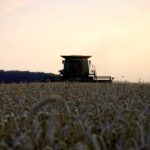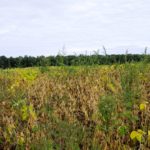
Advanced soil sampling
It’s time to get excited about soil testing again… seriously!

The protein advantage
In wheat, it can still pay to shoot for a protein-building combination of management, timing and a little luck

Pearce: Multiple modes of action an emerging reality for fungicides

Relay cropping
The goal for Ontario’s Dave McEachren is three crops in two years

2 covers — 25 species
P.E.I. potato growers are exploring diverse approaches to solve their low organic matter levels with cover crops

Is it time you get started with a cover crop?
Cover crops may not be as simple as we used to think. But they aren’t that complex either

Rotation refresher
More than crops, more than herbicides, it comes down to planning for success — with everything

The economics of Western bean cutworm
For bean growers, it turns out this is a very different — and difficult — pest

Troubling gaps within PMRA
An interview with crop protection expert Craig Hunter on the avalanche of change that may be heading toward Canadian farmers

The reason for Monosem
This European planter isn’t new, but the mindset behind it is grabbing more attention among producers looking to cut costs and boost performance


